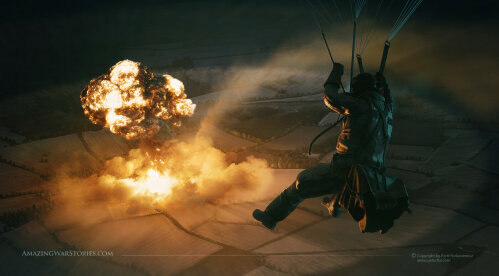The Sten Sub-machine Gun
The Sten Sub Machine Gun first made its appearance during World War II, when the British army was in desperate need of a cheap and reliable weapon that could be mass-produced quickly. After the near destruction of the British Army at Dunkirk, invasion seemed imminent and the fear of German paratroopers and their automatic sub-machine guns prompted Britain to design is equivalent. The design was a collaboration between Major Reginald Shepherd and Harold Turpin, with the final version being approved and put into service in 1941.
The Sten had a simple, yet effective design that was specifically made for ease of manufacture, using stamped metal parts and simple welding techniques that could be done by unskilled labor. This made it possible to produce an incredible 4 million Stens during the war, with comparative little cost or effort.
The weapon was named after its makers, Shepherd, Turpin, and Enfield, which was the government-owned small arms factory where it was made. However, originally the gun was not loved and early models were plagued with stoppages and malfunctions leading to unflattering nicknames such as “The Woolworth Gun” or the “Plumbers delight” and “The Stench Gun”.
But, after design improvements the situation did improve slightly, but it’s unreliable magazine was still a source of jamming. Despite its drawbacks there was still a lot to commend it – it could shoot up to 550 rounds per minute, making it perfect for close combat situations. It was also very easy to handle, with a simple bolt system that was easy to operate and maintain.
The gun fired a 9mm round which was a handgun round (hence the moniker SUB-machine gun) but this came about more by accident than design. By 1941 ammunition was in poor supply but luckily, the campaign in Eritrea had yielded large quantities of captured Italian 9mm ammunition. Nothing in the British armoury at this point used this type of ammunition so it was suggested that the Sten might be designed to use it.
The Sten Sub Machine Gun quickly became a symbol of resistance against the Nazi regime, as it was used by resistance forces in occupied territories across Europe. It was also used by special forces units, including the British SAS and American OSS, on covert missions behind enemy lines but the soldiers preferred to use the American Thompson submachine gun if they could get their hands on it.
The Mark V gun (pictured above) added a wooden stock and pistol grip which helped lose the “Woolworth’s” stigma of the earlier version (Woolworths being a chain shop whose goods were considered, by some, to be cheap).
In the years following World War II, the Sten remained in service with various countries around the world, including Israel and India. It even saw action in conflicts such as the Korean War and Vietnam War.
Today, the Sten Sub Machine Gun is considered a true classic of the firearms world, with many enthusiasts collecting and restoring them to their former glory. Its iconic design and historical significance make it a favourite among collectors and military enthusiasts alike.









